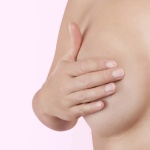It’s breast cancer awareness month again and pink ribbons adorn packaging everywhere from dog food to t-shirts, jeans, tennis balls, toasters, frozen dinners DVDs, M&Ms, perfumes, cocktails. You name it, everybody wants to get on the breast cancer awareness bandwagon and get the resultant PR benefits of appearing to support breast cancer research, hypocritical or not.
There are two problems here:
1. A process called “pinkwashing” defined by Breast Cancer Action as “a term in which the activities of companies and groups are criticized for positioning themselves as leaders in the struggle against breast cancer while engaging in practices that may be contributing to rising rates of the disease.
Cosmetics that contain carcinogenic substances including phthlates and bisphenol A (BPA) are frequently the subject of pinkwashing” criticism.
BMW, for example, gives $1 to Susan G. Komen for the Cure each time you test-drive one of their cars and Ford is touting a special edition Mustang with pink accents, even though pollutants found in car exhaust are linked to breast cancer.
2. Public relations campaign pressing women to have annual mammograms over the age of 40, despite a large body of research that shows mammograms deliver high levels of cancer-causing radiation (1,000 times the quantity in a chest X-ray) to sensitive breast tissue potentially aggravating small hidden cancerous growths.
For women who have had annual mammograms for more than ten years, more than half will get the dread phone call –in error — that they may in fact have breast cancer (called a false positive). Follow-ups will most often find them cancer-free at the cost of great emotional distress and, for many of them, disfiguring biopsies.
In addition, there is no proof that mammograms save lives when compared to breast cancer survival rates among women who perform monthly breast self-exams.
Safe alternative
Thermograms show patterns of heat and blood flow. They are a safe alternative to mammograms for a variety of reasons:
1. They are non–invasive. Nothing touches your body. There is no compression that may actually rupture growths, seeding the cancer.
2. There is no radiation.
3. A heat-sensing camera detects early formation of blood vessels that feed cancerous tumors and inflammation that may indicate breast cancer long before it approaches a dangerous size.
4. They can show signs of hormonal effects on the breasts that increase the risk of breast cancer before it actually occurs. We know that lifetime exposure to estrogen is the single greatest risk for breast cancer, so this is an important element of thermography.
5. They can be predictive, giving you as much as ten years head start to make lifestyle changes and be vigilant in monitoring your breast health to stop the growth of cancer cells.
Sisters, please don’t fall for the hype about mammograms. They could cost you your health or even your life. Instead, do your monthly breast self-exams and give serious consideration to including thermograms in your annual health regimen.
Find a thermography center near you.







